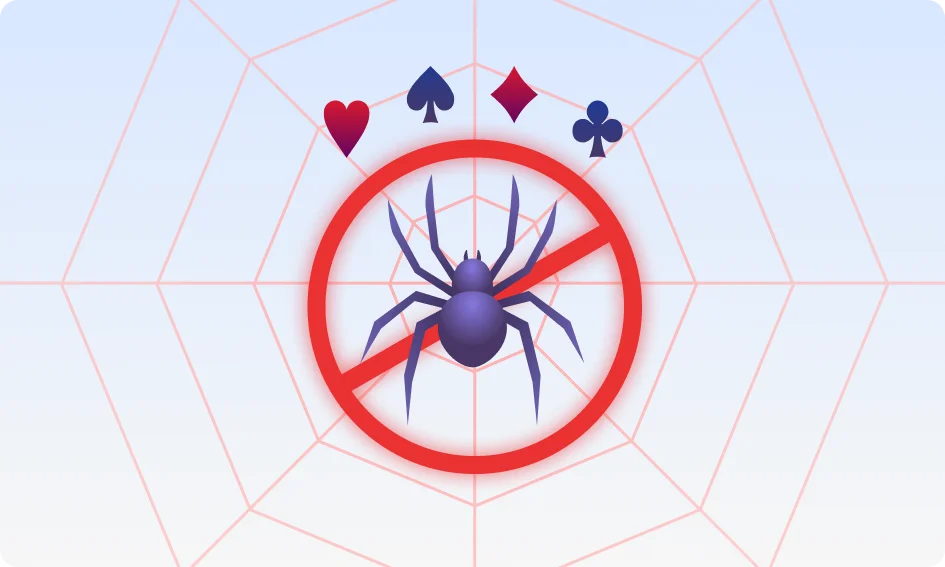The centuries-old game of Solitaire has birthed countless variations. Yet, only a few have become staples of online Solitaire. Spider Solitaire is one of them. Its infamous 4 Suits version elevates Spider Solitaire’s complexity and difficulty to such high levels that many players never take up the challenge. But, true Solitaire enthusiasts (like you and me) don’t fear such challenges. We fully embrace them.
The game’s challenging nature restricts the number of players who get to the top. You might have been grinding away at 4 Suits Spider Solitaire for a couple of months now and seeing little to no improvement. Don’t be disheartened. It’s quite possible that you’re being held back by a few common mistakes. Almost every beginner player makes these mistakes. Luckily, there are easy and implementable solutions. Before we get to the remedies, here is a quick rundown of the game.
A Quick Refresher
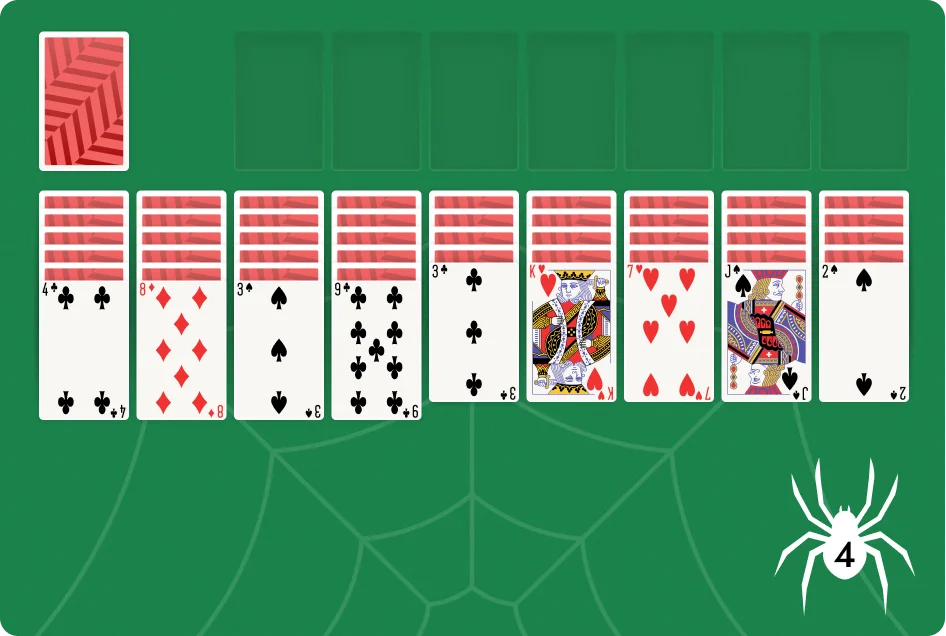
4 Suits Spider Solitaire differs from the traditional 1 Suit or 2 Suits versions by incorporating all four suits (Spades, Hearts, Clubs, and Diamonds). The objective in the game is to arrange all the cards into complete suits in descending order (from King down to Ace). Once you’ve completed a full sequence of the same suit, you can remove it from the layout and continue arranging the remaining cards. You win the game when you have assigned all the cards to a complete sequence.
Simple enough, right? Well, yes, the rules might seem straightforward. But, achieving mastery is an entirely different challenge. During my years of experience, I’ve noticed that the biggest hindrance players face in this game is not a lack of skill. Instead, it’s their inability to recognize and learn from the common mistakes they make. Once these are addressed, I believe that anyone can master this game with enough practice.
In this blog, I’ll list 11 common mistakes that even experienced players consistently make. I’ll also provide some guidance on how to avoid them.
Frequent Mistakes in 4 Suits Spider Solitaire
The painter Bob Ross once said, “We don’t make mistakes; we just have happy accidents”. This statement holds for Spider Solitaire. We make mistakes that result in setbacks but also compel us the think strategically. This leads to a better understanding of the game and improved skills over the long run. So, here are some of the most common pitfalls.
1. Forgetting the Game’s Goal
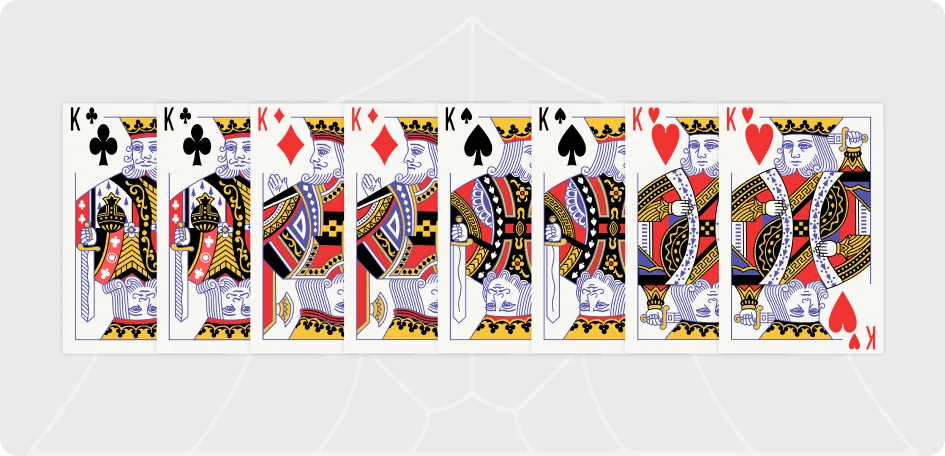
I have yet to meet a seasoned Solitaire player who sticks with just one variant for more than a couple of days. But, when you switch from, say, Klondike Solitaire to 2 Suits Spider Solitaire to FreeCell Solitaire, you’re bound to mix up some of the rules.
It’s also common for players to get caught up in individual moves and forget about the game’s end goal. To overcome this, make sure that you (a) brush up on the rules before every stint of 4 Suits Spider Solitaire and (b) remain mindful of the objective you’re trying to achieve.
2. Using the Stock Pile Too Soon
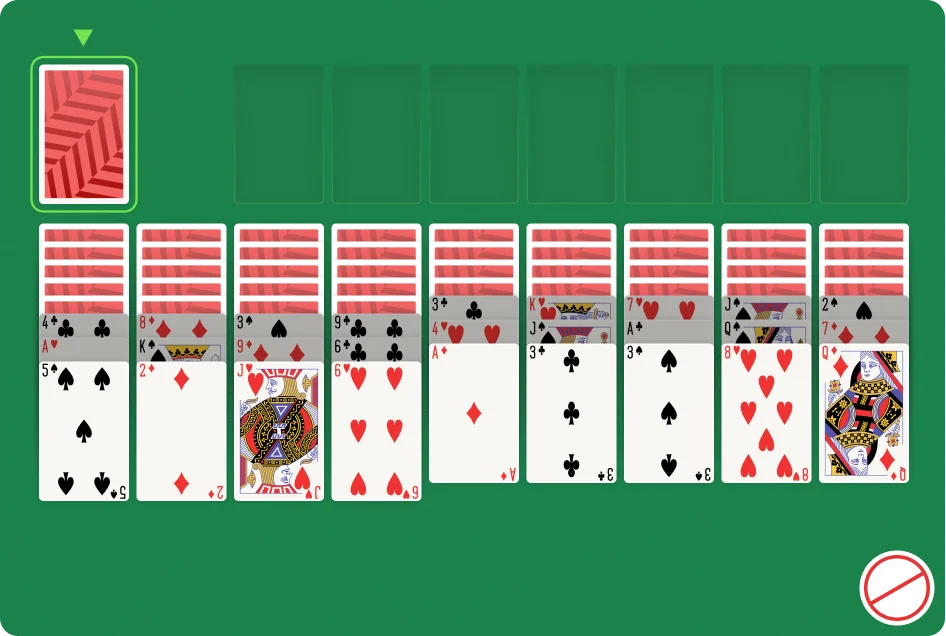
Like a glistening bottle of cold water on a hot day, the stock pile can be very tempting when the game becomes difficult. The stock is an invaluable resource, one that’s meant to be used when you run out of moves. But, players often use it prematurely to add a row of fresh cards. This gives them a false sense of control over the game.
As a rule of thumb, take two minutes to analyze the layout for possible moves before turning to the stock pile. 120 seconds might seem excessive. But, it’s just enough time for you to calmly study the game while preventing impulsive decisions.
3. Over-Relying on Hints
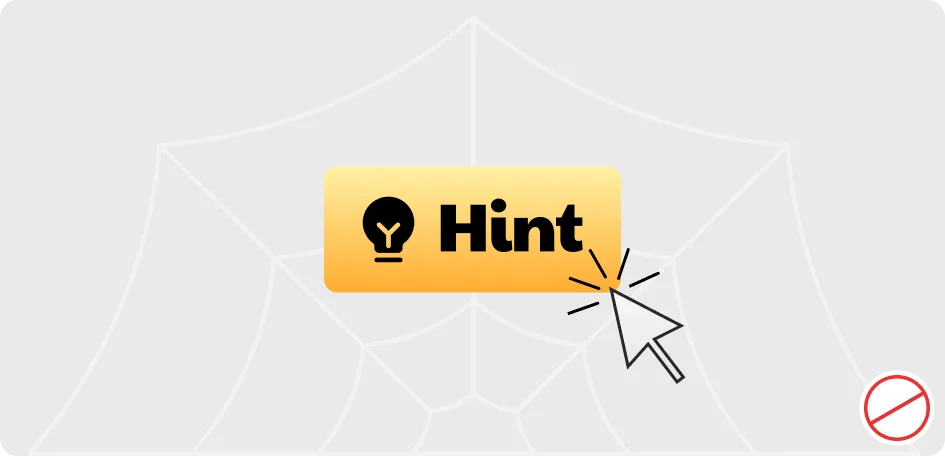
Hints are a gift that the game developers give to players. They can be very helpful, especially for beginners. But, I’ve seen many players use the hints every time it takes them more than a few seconds to recognize a possible move. Unsurprisingly, these folk struggle to improve their game. Repeatedly using the hints doesn’t allow the brain’s neurons to ‘exercise’.
The hints are also not 100% reliable. Try playing a game relying solely on hints, and you’ll see how quickly they can get you stuck. If you have a habit of going for the hint button every other second, then try restricting yourself to only using it every five minutes, then ten minutes, and so on. Play a few games with this strategy and you will start to unlearn the bad hint habit.
4. Making Emptying Columns Your Priority
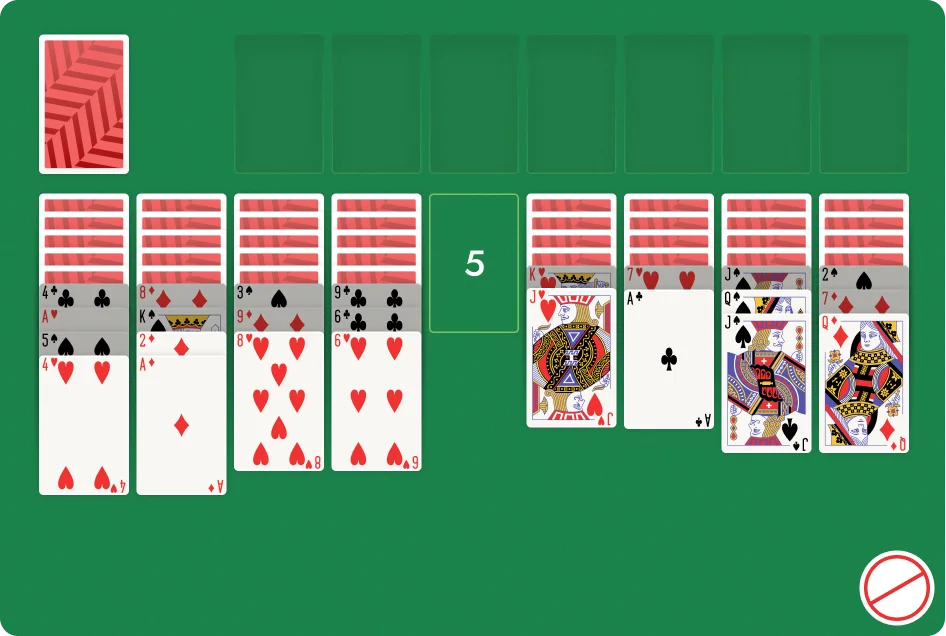
The goal of the game is, of course, to remove as many cards from the layout as possible. But, many players focus on this to an excessive degree. Becoming fixated on emptying the columns is a recipe for making your game more complicated.
You should, instead, focus on getting the cards in sequence first. Once you’ve completed a sequence, you can remove it from the layout, possibly emptying a column in the process.
5. Getting Intimidated by the Disorder
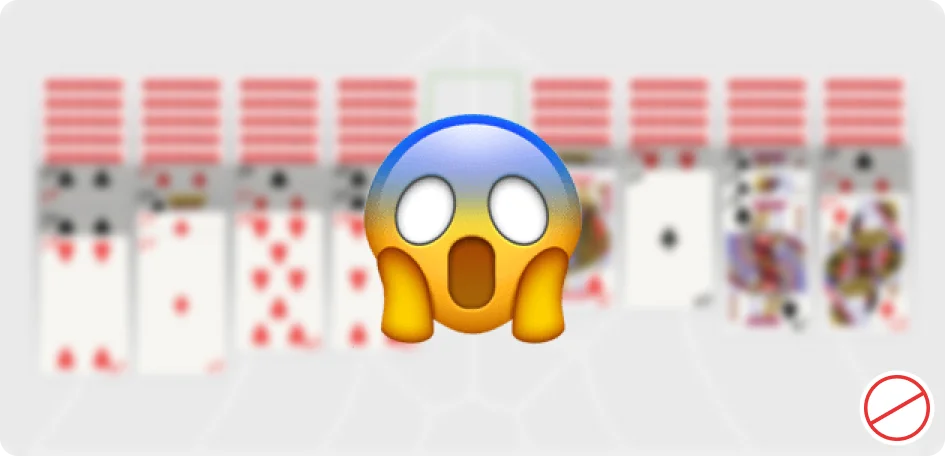
You’re 25 minutes into the game and the cards seem to be as disordered as they were when you started. We’ve all been there. In fact, I confess that this unwelcome scenario has drained my will to continue a game more often than I care to remember.
However, experience will teach you that this ‘disorder’ is nothing but a scary illusion. 4 Suits Solitaire is like solving a Rubik’s Cube in this respect. Sometimes, what appears to be chaos is actually just one or two steps away from order. This means that you should always persist. If you do, then the game often unfolds into orderly sequences right in front of your eyes.
6. Hesitating to Move Partial Card Sequences
One of the biggest ‘Eureka!’ moments I have had while playing 4 Suits Spider Solitaire was when I discovered that I could move multiple in-sequence cards across the layout. You’d be surprised many players either don’t know about this powerful tactic or simply ignore it.
In fact, if you ask me, this is the single most useful rule in the entire game. It increases the number of moves you can make at any given time. It also allows you to free up more cards, which opens up possibilities for even more moves.
7. Avoiding the Redo Button
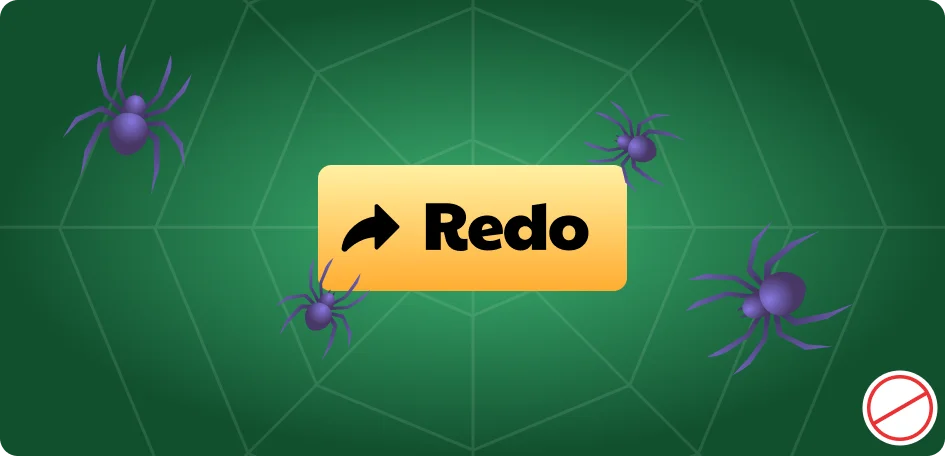
You will not lose the Solitaire gods’ favor if you use the redo button. It’s there for a reason: To help you learn from your mistakes. But, many players tend to avoid it.
It makes sense to hesitate before using this button if you’re a veteran who’s confident in your Solitaire skills. But, if you’re a beginner or a moderately seasoned player, then feel free to use the redo button. It’s a way to correct and learn from your mistakes.
8. Keeping Empty Columns Empty
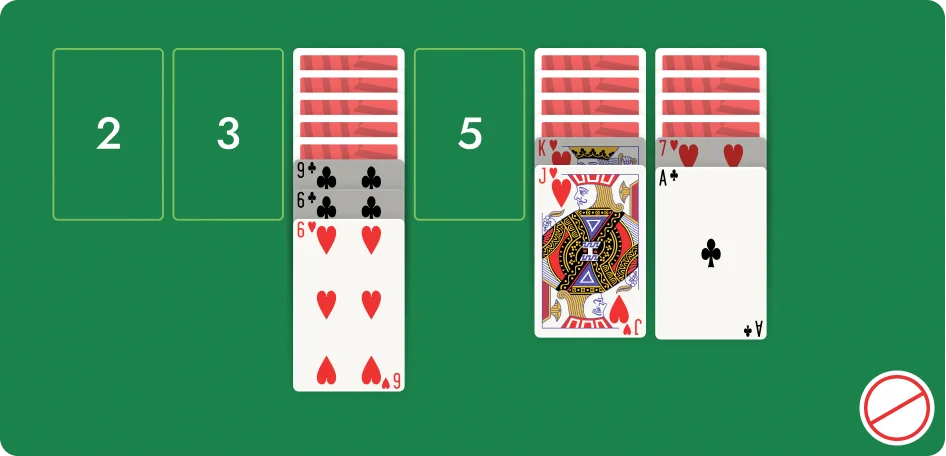
An empty column might seem like a relief when you’ve been trying to complete all the sequences for over an hour. But, keeping it empty can be a strategic advantage.
Empty columns can be very useful later in the game. They provide the flexibility to reorganize cards and construct new sequences. If you’ve ever made it far enough in a game of 4 Suits Spider Solitaire, then you’ll understand how crucial it is to have free space to move the cards around.
9. Focusing on One Objective at a Time
Spider Solitaire is a game of strategy. It requires intense concentration and foresight. Many players just pick one card and start finding possible matches for it. Once they find the match, they ignore the other cards and just simply move the card onto the match. This strategy will work sometimes, but it’ll rarely win you a game.
Always try to look at the bigger picture. Is there a better move you can make? Can you free up a face-down card while also creating a sequence? If you make a certain move, then what will the next move look like? These questions are constantly running through a pro Spider Solitaire player’s mind.
10. Becoming Impatient When Things Get Hard
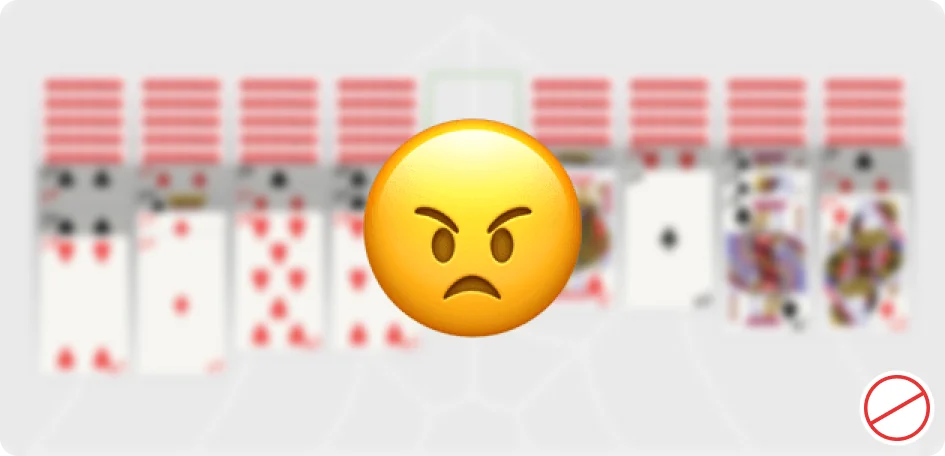
Solitaire was originally known as ‘Patience’ due to the amount of patience it requires to play the game. Many new players treat 4 Suits Spider Solitaire like a game of Blitz Chess. They make a move without giving it enough thought – without being patient enough.
So, make sure that your favorite beverage and snack are within reach before you start a game of 4 Suits. It’s also important to be seated in a peaceful and comfortable environment. These factors will make it easier to relax and completely immerse yourself in the game.
11. Not Practicing Enough
Often, the reason for a lack of improvement is simple: You haven’t practiced enough. I might be stating the obvious, right? Well, no. I’ve seen people who’ve played no more than five 4 Suits Spider Solitaire games before giving up on the prospects of improving their game.
Now, you might be wondering how exactly one determines what counts as ‘enough practice’. I wish there was a straightforward answer to this question. But, every person’s learning curve is different. Nonetheless, I can assure you that you won’t have to keep track of how many games you’ve played if you play regularly and play with dedication and passion.
Conclusion
4 Suits Spider Solitaire is an extremely rewarding game once you’ve learned the ropes. But, this is only possible if you (a) remain mindful of the mistakes you’re making and (b) actively try to address them in future games. Every time you make a mistake, just remember Bob Ross’ wise words.


